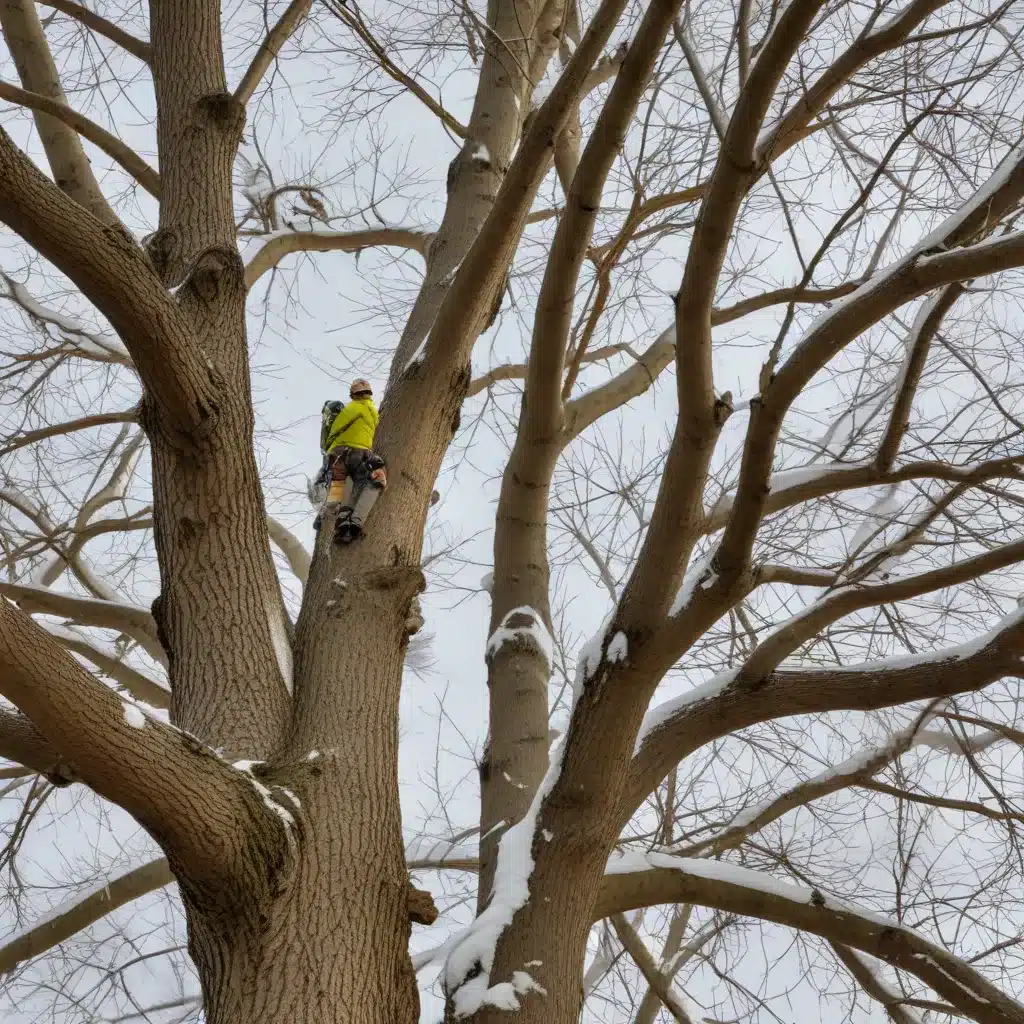
The life cycle of trees is deeply intertwined with the rhythms of the natural world. Each season brings a distinct set of environmental conditions that trees must adapt to for optimal growth, health, and resilience. As a tree care specialist at TriCounty Tree Care, I have a deep appreciation for the intricate dance between trees and their surroundings. By aligning our maintenance practices with nature’s patterns, we can unlock the full potential of our urban and suburban forests.
Tree Life Cycle Patterns
Annual Seasons
Trees are exquisitely tuned to the cyclical changes in temperature, precipitation, and daylight that define the four seasons. In spring, the arrival of warmer weather and increased rainfall triggers a burst of new growth, as trees allocate resources towards developing leaves, flowers, and new woody tissues. Summer brings peak foliage and reproductive activity, with trees focused on photosynthesis, nutrient uptake, and seed/fruit production. As autumn approaches, trees begin the process of dormancy, shedding leaves and reallocating resources belowground. The winter months are a time of relative quiescence, with trees conserving energy until the cycle begins anew.
Phenological Stages
Beyond the annual cycle, trees also exhibit more granular phenological stages that unfold over the course of a year. Bud break, the emergence of new buds in spring, is a critical early-season milestone. This is followed by leaf expansion, flowering, fruit/seed development, leaf senescence, and ultimately leaf abscission (dropping) in autumn. Each of these phases is triggered by precise environmental cues, such as accumulated heat units, day length, and soil moisture levels.
Environmental Factors
The seasonal transitions that trees experience are driven by a complex interplay of abiotic (non-living) factors, including temperature, precipitation, wind, solar radiation, and soil conditions. Biotic (living) factors, such as the presence of pests, pathogens, and symbiotic microorganisms, also play a significant role in a tree’s health and development. Understanding how these environmental variables shift throughout the year is essential for anticipating a tree’s needs and implementing appropriate care strategies.
Tree Health and Wellness
Optimal Nutrient Levels
Trees require a delicate balance of essential macro- and micronutrients to thrive. Seasonal variations in soil temperature, moisture, and microbial activity can impact the availability and uptake of these nutrients. Monitoring foliar nutrient levels and adjusting soil amendments accordingly can help maintain optimal nutrition and support vigorous growth.
Pest and Disease Management
Many insect pests and fungal pathogens exhibit synchronicity with their host trees, emerging and proliferating at specific times of the year. Staying attuned to these seasonal patterns allows arborists to time interventions more effectively, whether through the application of targeted treatments or the deployment of biological controls.
Structural Integrity
The annual cycle of growth, dormancy, and shedding can affect a tree’s structural integrity. Monitoring for signs of decay, weak branch attachments, and other structural defects, and addressing them through proper pruning and cabling, is crucial for preserving the long-term health and safety of trees.
Seasonal Maintenance Practices
Pruning and Trimming
The optimal time for pruning and trimming varies by species and desired outcomes. In general, late winter or early spring is an ideal window for structural pruning, as trees are still dormant and less prone to stress. Summer pruning can be used to manage growth and shape, while autumn pruning may be appropriate for certain species to encourage flower bud development.
Soil Amendments
Soil health is the foundation of tree wellness. Seasonal applications of organic matter, such as compost or mulch, can help regulate soil moisture, suppress weeds, and foster a diverse community of beneficial soil microorganisms. Lime or sulfur applications may also be warranted to adjust soil pH at the appropriate times of year.
Watering Regimens
Trees have varying water needs throughout the seasons. During the active growing season, maintaining consistent soil moisture is crucial to support photosynthesis, nutrient uptake, and root growth. In autumn and winter, however, reducing irrigation can help prepare trees for dormancy and minimize the risk of root rot or other moisture-related issues.
Holistic Tree Ecosystem
Biodiversity Considerations
Trees do not exist in isolation; they are integral components of dynamic ecosystems that support a diverse array of organisms, from microbes to birds and mammals. Adopting a holistic approach to tree care, which considers the interdependencies between trees and their associated flora and fauna, can enhance overall ecological resilience and unlock cascading benefits for the entire community.
Urban Forestry Impacts
In the context of urban and suburban environments, the seasonal care of trees takes on added importance. Trees in these settings provide invaluable ecosystem services, from mitigating the urban heat island effect and sequestering carbon to improving air quality and supporting human health and well-being. Aligning maintenance practices with the natural rhythms of trees can maximize these benefits and ensure the long-term vitality of our urban forests.
Climate Resilience
As the global climate continues to shift, understanding and adapting to seasonal patterns will be crucial for ensuring the long-term resilience of our trees. By anticipating and responding to changes in temperature, precipitation, and other environmental factors, arborists can help trees better cope with stress, disease, and other climate-related challenges.
At TriCounty Tree Care, we are passionate about cultivating a deep understanding of the intricate relationship between trees and their environment. By tailoring our maintenance practices to the seasonal needs of trees, we can unlock their full potential, promoting vibrant, resilient, and ecologically valuable urban and suburban forests. Contact us today to learn more about our holistic approach to tree care.


